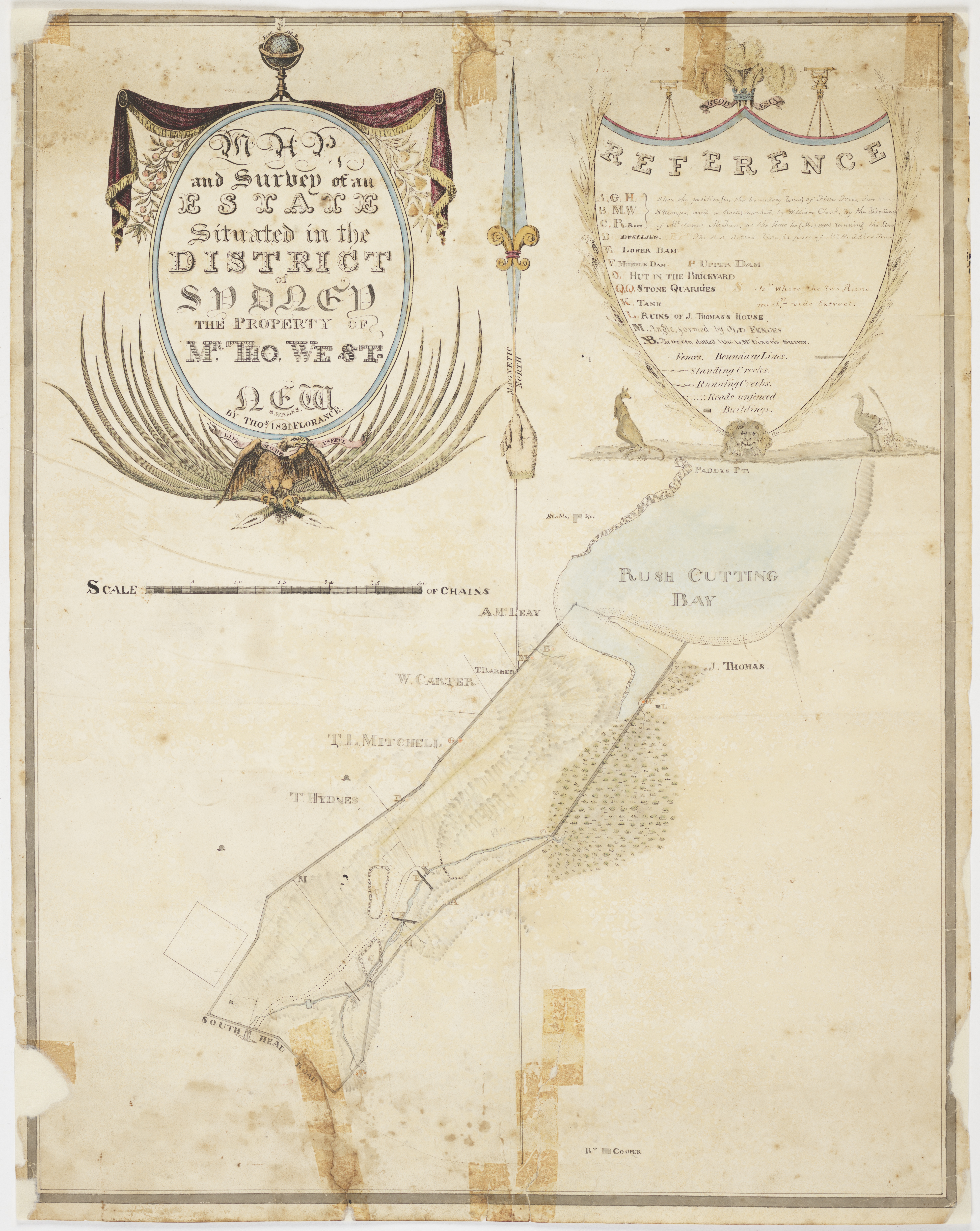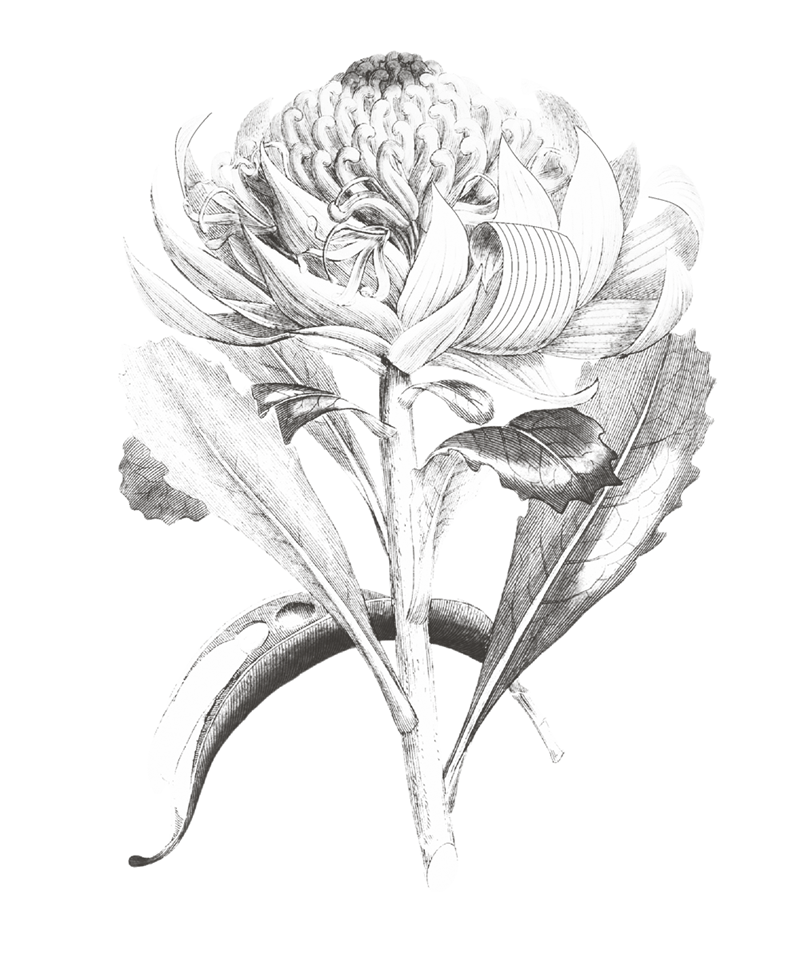Obed West’s father, Thomas West, was a carpenter who was convicted of burglary in 1800 and sentenced to transportation for life. He arrived in Sydney in June 1801, where he began a new life with fellow convict, Mary Rugg, with whom he had two children including Obed.1

'Map and survey of an estate situated in the district of Sydney, the property of Mr. West',
Thomas Florance, 1831, State Library of NSW, [M2 811.18114/1831/1]
Barcom Glen was granted to Thomas in about 1810 by Governor Lachlan Macquarie. He built a watermill on his estate, the first in Sydney Town, for the milling of flour. On 14 January 1812 Governor Macquarie, accompanied by his wife, Elizabeth, went to see the watermill, which he described as follows:
Set agoing, and Grind the first Wheat; it having only been completed within these few days after great labour and industrious exertions on the part of West the Projector and Proprietor of it.
Mrs. M. [Elizabeth Macquarie] being the Patroness of this most useful Undertaking, made West a present of Five Pounds worth of Wheat this morning for the use of his own Family, and to be the first Wheat ground by the New Mill. —
I also made him a Present, on the part of Government, of Twelve Gallons of Spirits to assist him in paying his Work-men.2
In December 1813, West was granted a conditional pardon:
…in consideration of his general good Conduct and Character for Sobriety and Industry, and also in consideration of his having lately erected a Water Mill for the grinding of Grain at Barcom Glen, within one Mile and a Half of the Town of Sydney.3
On 16 May 1816, surveyor John Meehan recorded his observations of West’s land, situating Thomas’s house on the ’edge of a marsh’ and ‘a large Mahogany tree’.4
West planted avenues of Norfolk Island Pine and the family kept an orchard on their estate. They lived in a cottage, also named Barcom Glen, which was built of stone quarried from the estate and sheltered under immense Norfolk pine trees and Moreton Bay figs. The family mausoleum was also constructed on the site, along with a rifle range and a dairy.5
The watermill operated until the 1830s, and a pair of millstones used by West in his mill survives in the collections of the Museum of Applied Arts and Sciences.6

Obed West's cottage on Barcom Glen, c1913
Cox family album, State Library of NSW, [DL PX 142, 29]
Read the next part of the story.
Greg Curnow, ‘West, Thomas (1773–1858)’, Australian Dictionary of Biography, National Centre of Biography, Australian National University, https://adb.anu.edu.au/biography/west-thomas-13245/text5287, published first in hardcopy 2005, accessed online 16 June 2023 and Obed West, Reflections on Old Sydney & Colonial Days, Janice Johnson, ed. (Camden, NSW: Janice Johnson, 2012), 3. ↩︎
Lachlan Macquarie, Volume 10: Memoranda and letters, 14 January 1812, State Library of NSW, SAFE/A 772 (Safe 1/359), page 40 ↩︎
‘Classified Advertising’, The Sydney Gazette and New South Wales Advertiser, 25 December 1813, 1, http://nla.gov.au/nla.news-article628827 ↩︎
‘The Survey Department’, The Australian, 20 July 1832, 3, http://nla.gov.au/nla.news-article42008971 ↩︎
‘A Pioneer Home’, Darling Downs Gazette, 9 February 1912, 7, http://nla.gov.au/nla.news-article183194287 and Mary Salmon, ‘Historic Homes of N.S. Wales’, Sunday Times, 12 July 1908, 6, http://nla.gov.au/nla.news-article126741671. ↩︎
Margaret Simpson, ‘Millstones used at West’s Barcom Glen watermill, Paddington, NSW, 1810-1812’, November 2015, https://ma.as/216962. ↩︎

